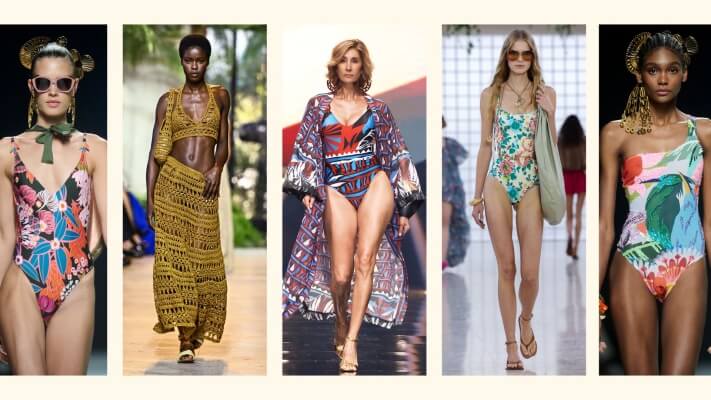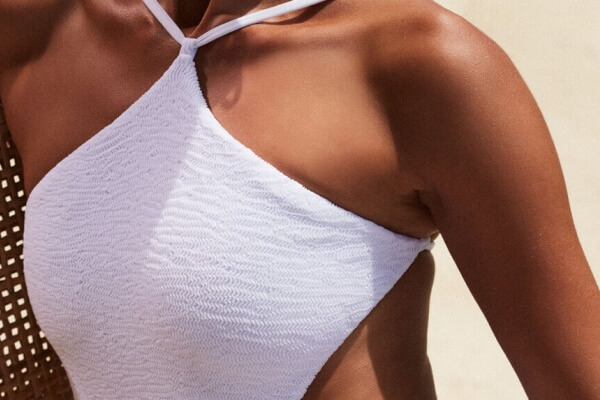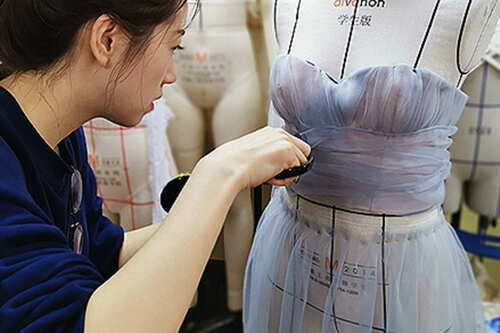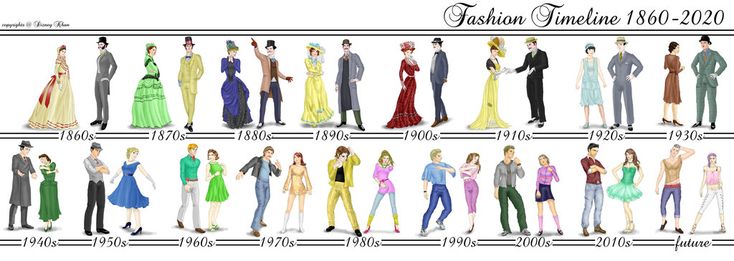Winning SS26: Your 4-Step Lingerie & Swimwear Development Guide
The fashion industry never sleeps. While consumers are just beginning to enjoy their summer 2025 purchases, leading brands have already set their sights on Spring/Summer 2026. This forward-thinking approach isn't just for industry giants—it's essential for any brand wanting to stay competitive in the fast-paced world of lingerie and swimwear.
Planning your SS26 collection now gives you the strategic advantage to secure the best materials, incorporate cutting-edge innovations, and perfect your designs before your competitors even begin their development process.

As a leading lingerie manufacturer with over 30 million USD in annual sales through 3000+ stores, I've witnessed firsthand how early planning translates to market success. Our factory in Shantou, Guangdong has consistently helped brands stay ahead by embracing a body-before-fabric philosophy that balances comfort, aesthetics, and quality.
Let me walk you through the four critical steps to developing a winning SS26 lingerie and swimwear collection that will captivate your customers and boost your sales.
Step 1: Lock In Your Trends (September) - What Will Define SS26?
The first step in creating a successful collection is understanding the trends that will dominate the market. For Spring/Summer 2026, several key directions are emerging that will influence lingerie and swimwear design.
What colors will dominate SS26?
SS26 swimwear color trends are moving in multiple exciting directions:
-
Dreamscape palette: A blend of ethereal pastels with bold, futuristic hues that create a surreal escape into imagination and technology. Think soft, serene tones balanced with vibrant colors and earthy accents for depth.
-
EcoTide colors: Inspired by the connection between humans and nature, this palette blends rich greens and browns with sandy neutrals, vibrant oranges, deep reds, and calming oceanic blues.
-
Pastel revolution: Soft, dreamy colors are making a strong comeback, but with a modern twist. These aren't your typical baby blues and pinks—they're sophisticated, slightly muted versions that feel grown-up and refined.
What silhouettes and design themes will be trending?
SS26 is shaping up to be a season of duality, where seemingly opposite concepts merge to create something fresh and exciting:
-
Tactile nostalgia meets futuristic energy: Designs that blend retro elements with forward-thinking innovations. Think vintage-inspired cuts enhanced with cutting-edge fabrics and technologies.
-
Bold sculptural volumes: Swimwear is becoming more architectural, with interesting shapes and structural elements that create visual interest and flatter the body in new ways.
-
Hyper-tactile embellishments: Textures that invite touch and create visual interest, from subtle ribbing to more pronounced textural elements.
-
Surf-inspired looks: Adventure-ready silhouettes with fresh textures and improved functional benefits are gaining strong interest, reflecting the growing trend of sports tourism.

At HAVING, we're already incorporating these trends into our early concept designs, focusing on how they can be adapted to enhance both comfort and aesthetics in our lingerie and swimwear lines. Our design team is particularly excited about the balance between nostalgic elements and futuristic innovations, which allows us to create pieces that feel both familiar and fresh.
Step 2: Source Innovative Materials (October) - What Will Your Collection Be Made Of?
Once you've identified the trends that align with your brand identity, it's time to source the materials that will bring your vision to life. For SS26, several innovative fabrics and materials are emerging as game-changers in the lingerie and swimwear industry.
Sustainable Materials Leading the Way
Sustainability isn't just a trend—it's becoming the standard. For SS26, look for:
-
Recycled fibers: Materials like LYCRA®'s regen elastane (RCS-certified and made from reclaimed production waste) are enabling truly circular approaches to swimwear manufacturing.
-
Biodegradable options: New developments in biodegradable elastane and nylon blends that maintain performance while reducing environmental impact.
-
Plant-based dyes: Natural colorants derived from plants that reduce chemical usage and create unique, organic color variations.
Performance-Enhancing Innovations
Beyond sustainability, performance remains crucial for swimwear and lingerie:
-
"Jelly-feel" high-stretch fabrics: Ultra-elastic materials with a unique tactile quality that provides exceptional comfort and shape retention.
-
Moisture-wicking, quick-dry technologies: Advanced fabrics that enhance comfort during active use and travel.
-
UV-protective materials: Fabrics with built-in sun protection, addressing growing consumer concerns about skin health.
Texture and Visual Interest
SS26 will see increased emphasis on materials that create visual and tactile interest:
-
Jacquard knits: Creating intricate patterns and textures that align with the trend of tactile nostalgia.
-
Digital-influenced textures: Fabrics mimicking AI-generated art or bioluminescent effects.
-
Textured knits: Adding dimension and interest to otherwise simple designs.

At our HAVING factory, we've been developing our own line of sustainable stretch fabrics that combine recycled content with exceptional performance. Our R&D team has created exclusive blends that offer the perfect balance of support, stretch, and recovery—essential qualities for both lingerie and swimwear that need to maintain their shape through multiple wears and washes.
Step 3: Launch Concept Design & First Sampling (October-December) - Why Beat the Production Rush?
With trends identified and materials sourced, it's time to move into the design and sampling phase. Starting this process before year-end is crucial for several reasons.
Why Complete First Samples Before Year-End?
-
Avoiding the Chinese New Year production halt: In 2026, Chinese New Year falls on January 29, which means many factories in Asia will be closed for 2-3 weeks around this time. Having your first samples completed before this production standstill ensures you stay on schedule.
-
Time for refinement: Early sampling gives you the luxury of time to refine designs, adjust fits, and perfect details without rushing.
-
Material testing: Some innovative materials require real-world testing to ensure they perform as expected in different conditions.
-
Competitive advantage: While competitors are just beginning their design process in January, you'll already be refining and finalizing your collection.
The Sampling Process Timeline
For optimal results, structure your sampling process as follows:
- October: Finalize design concepts and technical specifications
- November: Submit tech packs to manufacturers and begin first sample development
- December: Review first samples, make necessary adjustments, and approve designs for second sampling
- January: While production is paused for Chinese New Year, use this time for internal review and strategy development
- February: Resume with second sampling and refinements

At HAVING, our experienced sampling team can turn around first samples in just 10-15 days, allowing for multiple iterations before the Chinese New Year break. This accelerated timeline has helped many of our partner brands stay ahead of market trends and launch their collections at optimal times.
Step 4: Establish Your SS26 Development Calendar - Your Roadmap to Success
The final step in preparing for a successful SS26 collection is creating a comprehensive development calendar that maps out every milestone from concept to market launch.
SS26 Lingerie & Swimwear Development Timeline
| Timeline | Development Phase | Key Activities |
|---|---|---|
| September 2025 | Trend Research & Concept Development |
• Analyze SS26 runway trends • Identify color stories and themes • Create mood boards and design direction |
| October 2025 | Material Sourcing & Design Finalization |
• Source innovative fabrics and trims • Finalize design sketches • Create technical specifications |
| November 2025 | First Sample Development |
• Submit tech packs to manufacturers • Begin first sample production • Prepare marketing strategy |
| December 2025 | Sample Review & Refinement |
• Evaluate first samples • Make necessary adjustments • Approve designs for second sampling |
| January 2026 | Strategy & Planning (During CNY) |
• Finalize collection lineup • Develop pricing strategy • Plan marketing campaigns |
| February 2026 | Second Sampling & Production Preparation |
• Review second samples • Make final adjustments • Prepare for production |
| March 2026 | Production & Quality Control |
• Begin bulk production • Implement quality control measures • Finalize packaging |
| April 2026 | Marketing & Distribution Preparation |
• Create marketing materials • Prepare e-commerce assets • Plan distribution logistics |
| May 2026 | Launch & Market Introduction |
• Launch SS26 collection • Execute marketing campaigns • Monitor initial sales performance |
Key Considerations for Your Calendar
When building your development calendar, keep these factors in mind:
-
Buffer time: Always add buffer periods for unexpected delays or challenges.
-
Market timing: Consider when your target market typically shops for spring/summer items. In the Southern hemisphere, this would be August/September for Spring/Summer and October/November for High Summer.
-
Trade shows and wholesale deadlines: If you sell wholesale, factor in time for indenting (pre-orders from retailers), which typically requires 1-2 months before placing factory orders.
-
Marketing lead time: Allow sufficient time to create compelling marketing assets that showcase your collection effectively.

At HAVING, we work closely with our clients to create realistic production timelines that account for all these factors. Our experience manufacturing for over 3000 stores globally has taught us the importance of proper planning and the value of building flexibility into every timeline.
Conclusion: Partner with Forward-Thinking Suppliers for SS26 Success
Developing a successful SS26 lingerie and swimwear collection requires foresight, planning, and the right partnerships. By starting now, you position your brand to capitalize on emerging trends, secure innovative materials, and perfect your designs before your competitors even begin their development process.
The most successful brands understand that their suppliers are strategic partners in this journey. Working with experienced manufacturers who understand both the technical aspects of lingerie and swimwear production and the market trends that drive consumer behavior can make all the difference in creating a collection that resonates with your target audience.
At HAVING, our body-before-fabric philosophy ensures that every piece we create prioritizes comfort and fit without sacrificing style or quality. Our extensive experience in developing mens' underwear and women's intimate apparel—including bras, panties, shapewear, and swimwear—makes us the ideal partner for brands looking to make their mark in SS26.
Frequently Asked Questions (FAQ)
When should I start developing my Spring/Summer 2026 collection?
Ideally, you should begin your SS26 development process in September 2025, approximately 8-9 months before the collection launch. This timeline allows for comprehensive trend research, material sourcing, multiple sampling rounds, and production without rushing.
What are the key swimwear trends for Spring/Summer 2026?
SS26 swimwear trends include a blend of tactile nostalgia and futuristic energy, bold sculptural volumes, hyper-tactile embellishments, and surf-inspired looks. Color trends feature dreamscape palettes (ethereal pastels with bold futuristic hues), nature-inspired EcoTide colors, and sophisticated pastels.
How are sustainable materials influencing swimwear design for 2026?
Sustainability is becoming standard rather than optional, with innovations like recycled elastane, biodegradable nylon blends, and plant-based dyes leading the way. Brands are increasingly adopting circular approaches to swimwear manufacturing, using materials made from reclaimed production waste.
How does the Chinese New Year affect swimwear production schedules?
Chinese New Year 2026 falls on January 29, which means many factories in Asia will close for 2-3 weeks around this time. To avoid production delays, it's crucial to complete first samples before year-end and plan your development calendar accordingly.
What's the difference between fashion seasons and seasonal fashion?
Fashion seasons typically refer to Spring/Summer (S/S) and Autumn/Winter (A/W), with S/S running from late February to July and A/W from August to January. Seasonal fashion refers to specific pieces designed for particular weather conditions or events (like monsoon clothing or festival wear) that may not align with these traditional fashion seasons.
